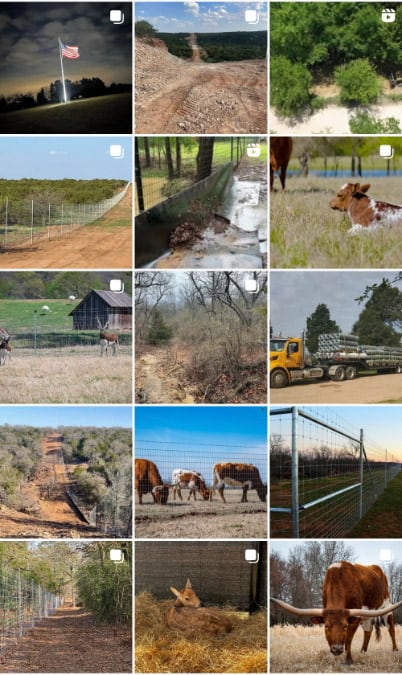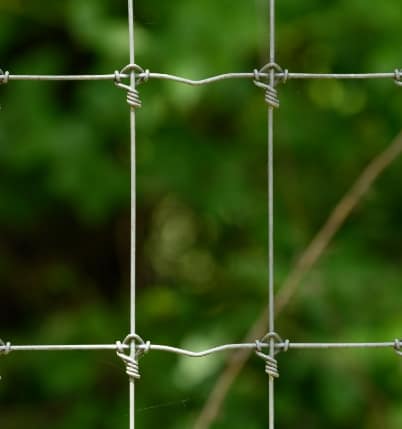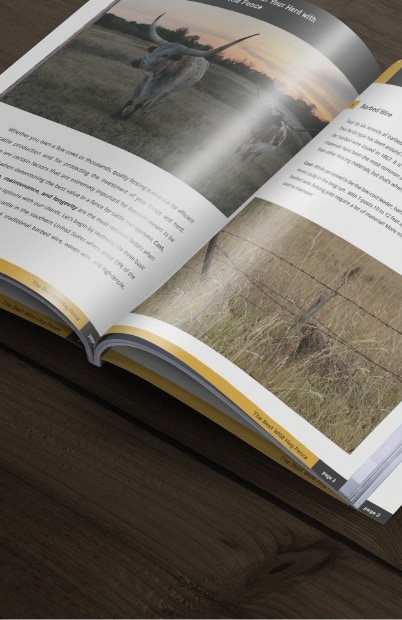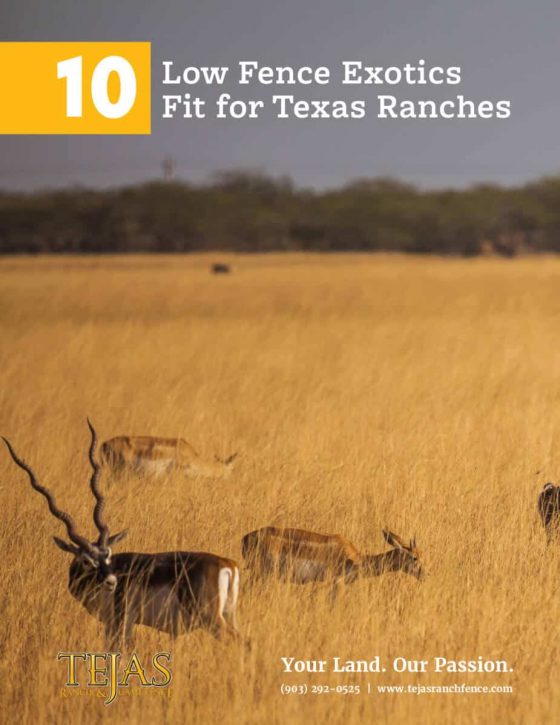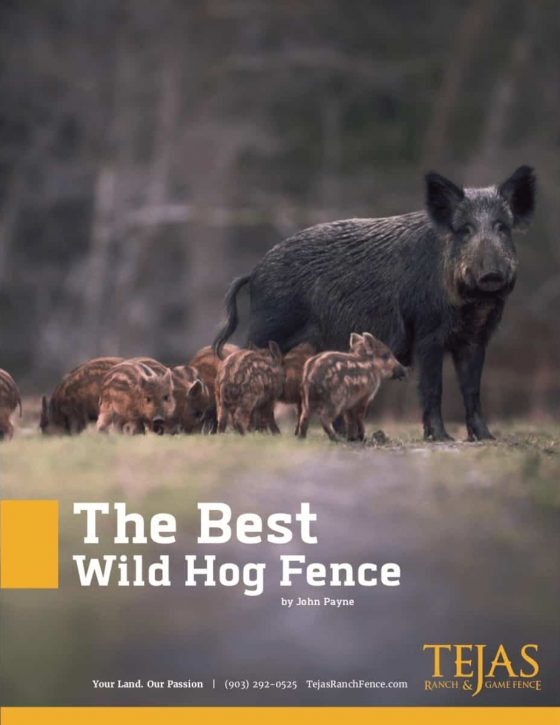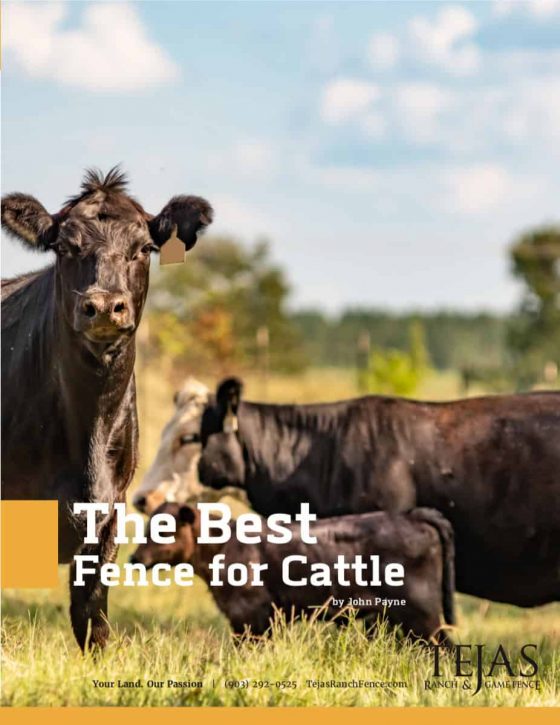Guest Contributor: Stephen Schwartz, Hortenstine Ranch Company, QDMA Level 2 Deer Steward
Managing the deer herd on your ranch can be a daunting task if approached incorrectly. It is certainly one of those topics, like habitat management, that can come with a lot of opinions, bad habits, and practices.
Learning Best Practices
Many landowners solely rely on techniques that have been passed down throughout each generation based on past successes or failures, and have been tweaked along the way. There is nothing wrong with that, and in some cases, it’s very effective. However, with learned good habits may come a few bad habits that are often hard to break. That’s where the Quality Deer Management (QDM) approach comes in. Their framework is structured more toward developing and maintaining a healthy herd rather than trophy management, but it’s certainly not exclusive to a particular style of management. QDM is science based, research driven, and will work in both low and high fence environments.
Herd management can be a double-edged sword, and I personally, have been guilty of using some of these inherited bad habits. There’s nothing wrong with the knowledge that’s been passed down from real life lessons, but if not applied correctly, it can create a lot of headache with today’s changing conditions. We’ll highlight several of the key components of herd management and look at practical ways to implement them on your property.
Predator Management & Fawn Recruitment
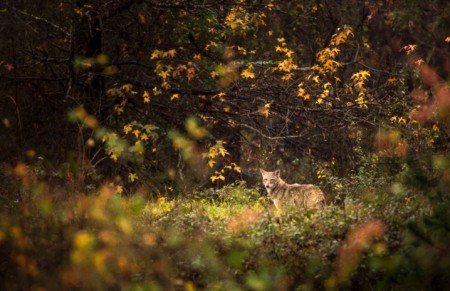 First, we’ll discuss predator management and fawn recruitment. Simply put, if fawn recruitment is low, the natural reaction is to back off of your doe harvest. That’s the quick fix, but don’t stop there. The source of your fawns is certainly a key resource, but once they hit the ground the story isn’t over. There’s no question that in any region in the country, particularly the south/southeast coyotes and bobcats take a large toll on our fawn population. With this, comes balance, it certainly isn’t necessary to totally eradicate all predators, but you cannot manage your deer herd, without managing your predators. Many landowners often minimize the effects that bobcats can have. However, coyotes can still be just as fierce and in some cases more challenging to manage due to their nature. In this case, trapping is certainly the way to go, especially in late winter and early spring just before the fawns drop. Becoming an effective trapper in one season can be very difficult. It takes a lot of time and effort to become successful at trapping these wily animals. Hiring a professional may be the way to go for most landowners. Unless you have the time and resources, then learning the craft will benefit you for years to come.
First, we’ll discuss predator management and fawn recruitment. Simply put, if fawn recruitment is low, the natural reaction is to back off of your doe harvest. That’s the quick fix, but don’t stop there. The source of your fawns is certainly a key resource, but once they hit the ground the story isn’t over. There’s no question that in any region in the country, particularly the south/southeast coyotes and bobcats take a large toll on our fawn population. With this, comes balance, it certainly isn’t necessary to totally eradicate all predators, but you cannot manage your deer herd, without managing your predators. Many landowners often minimize the effects that bobcats can have. However, coyotes can still be just as fierce and in some cases more challenging to manage due to their nature. In this case, trapping is certainly the way to go, especially in late winter and early spring just before the fawns drop. Becoming an effective trapper in one season can be very difficult. It takes a lot of time and effort to become successful at trapping these wily animals. Hiring a professional may be the way to go for most landowners. Unless you have the time and resources, then learning the craft will benefit you for years to come.
Managing Your Herd
Second, managing your herd is also about managing their habitat as we mentioned in the previous article. Remember, it’s not just about the growing season. This is a year-round chore. It also means getting out and monitoring the availability of food in late winter and early spring. This is the most critical time for deer, as they are approaching spring/fawning season and food sources are low. There are several practical ways to go out and assist them during this stressful time.
The first way is to manage your native vegetation. Here in the south, some food may be available, but it’s sparse. Green briar and honeysuckle for instance, will be green during this time of the year and pulling it down into a deer’s reach can help them. On the property we lease, we have areas where either an old brush pile has been overtaken with honeysuckle or something similar along a tree line. We will hinge cut small saplings where these vines cling and actually bring the vegetation lower to the ground so the deer will be able to reach it. This may seem tedious, but a few hours worth of work could help tremendously.
Food Plots
The food plots we planted in September and October will be key in late winter/early spring. Acorns will have just about vanished. At this point, the turnips, radishes, and winter grass have all fully developed. Deer will key in on these food sources. Depending on the volume your land is able to produce, this could be the only quality source of food they have. This could make a huge impact on building your deer herd. If they know they can find food all year, especially during early spring, they are more likely use your property the rest of the year.
Minerals
Another option is placing mineral throughout the property in the form of a salt lick or block. This is also an excellent way to monitor your deer herd, which is key to managing them. In the south, it’s rare to find a property unaffected by wild hogs, so we’ve adopted this method from the QDMA for securing our mineral blocks where the hogs can’t hijack them.
We personally use the hard-rock mineral blocks from Trophy Rock. They last around 4 months, depending on the rainfall. The deer will literally use them year-round. They have turned into an incredible source of supplemental feed that is very cost effective and helps us keep tabs on our deer herd.
Doe Management
Doe management is vitally important to developing a healthy deer herd. Before you start shooting does and recording data, take a step back and develop an overall plan. Maybe even have a biologist come in and conduct a deer survey on the property to assess what you already have. Once you have a good handle on your current herd dynamics, it’s also good to go ahead and supplement this with a thorough camera survey. This will be beneficial as the seasons and conditions change, and also serve as a way to keep an eye on inventory throughout the year. More on that in the next article.
Now that you have an idea on how many does you’d like to take this coming fall, develop a plan on how and where you want to take them. I, personally, try and take my does early in the season before the rut, but this is due to our antlerless season, and leaving time to focus on my buck harvest during mid and late November. Most people focus on achieving a certain sex ratio when doe harvest is brought up, but this is only a piece of it. Taking does each fall can actually increase fawn production.
This is one of the traps I fell into. I grew up with the notion that if your property wasn’t just ‘over-run’ with deer, then shooting several does each season was hurting fawn production. I just couldn’t wrap my head around shooting multiple does in a season, knowing they were potentially carrying next year’s fawn(s). There was no scientific data to back up my assumptions, just too many years of being uninformed led me to be hesitant in shooting doe. Then once I was aware that does needed to be taken each year, I only wanted to take the ‘old dry doe’ and preserve a potential producing doe for next year. The main problem with this is neither I, nor the other hunters on our lease could single handedly alter the population that drastically. The second problem I was forgetting, was the carrying capacity of the property. Too many doe equals an unhealthy deer herd, thus taking doe out each season will immediately equate to more food available for the remaining deer. It really is that easy. It just took time. It also took me getting out of my uninformed comfort zone to actually implement this method. In time, shooting the right doe was also revealed to me.
Shooting the Right Doe
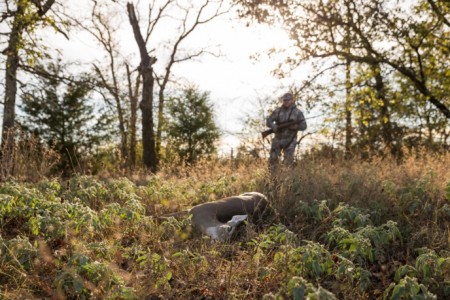 In years past of while, waiting around for that old usually very wise doe to show up… I was passing a lot of younger and, truthfully, higher maintenance does. Those younger does, even yearlings, are the highest maintenance deer on the property. They require more forage for the first year’s survival than an old dry doe. Long story short, the correct doe to take, is the one that presents the best opportunity for a clean shot. So consequently, in some cases punching a few tags could mean a much healthier deer herd.
In years past of while, waiting around for that old usually very wise doe to show up… I was passing a lot of younger and, truthfully, higher maintenance does. Those younger does, even yearlings, are the highest maintenance deer on the property. They require more forage for the first year’s survival than an old dry doe. Long story short, the correct doe to take, is the one that presents the best opportunity for a clean shot. So consequently, in some cases punching a few tags could mean a much healthier deer herd.
Achieving the Right Ratio
Another result of managing your herd is achieving a desirable sex ratio. This is accomplished with shooting both bucks and does. Generally speaking, nature provides bucks and does each year in proportion, so we should harvest them the same way. This will be limited in some areas due to restricted harvest bag limits set by the state game department. Either way, don’t get caught up in trying to whittle your herd down to a perfect 1:1 ratio. This isn’t realistic to achieve and maintain in most cases, but a 2:1 (2 does to 1 buck) is certainly more realistic and much easier to maintain once everyone is on board. For a more detailed look at this check out the following link. Other consequences of managing your herd is possibly intensifying the rut. Achieving a tighter sex ratio will usually yield to a more predictable and intense rut period. Check out the details here, https://www.deerassociation.com/triggers-whitetail-rut/
Shooting the Right Buck
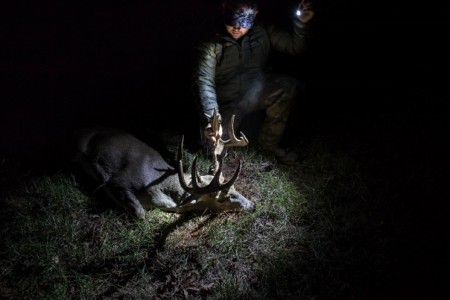 Now that we are talking about shooting bucks – which one is the correct buck to take? This is where the debates really heat up. In many areas of Texas, hunters only have one “trophy” buck tag, and usually another one for a “cull” buck. So, what is a trophy and what exactly is a cull? This is a whole other article in itself, but essentially it all comes down to you and your goals for your property. We won’t even get into the spike debate, there is plenty of research showing where some young spikes grew into a nice, branch antlered buck later in life. There are too many variables to make a general statement. In the end, a trophy is in the eyes of the beholder.
Now that we are talking about shooting bucks – which one is the correct buck to take? This is where the debates really heat up. In many areas of Texas, hunters only have one “trophy” buck tag, and usually another one for a “cull” buck. So, what is a trophy and what exactly is a cull? This is a whole other article in itself, but essentially it all comes down to you and your goals for your property. We won’t even get into the spike debate, there is plenty of research showing where some young spikes grew into a nice, branch antlered buck later in life. There are too many variables to make a general statement. In the end, a trophy is in the eyes of the beholder.
For several seasons, I was thrilled with a 3 ½ year old buck, but over time that motivated me to try and target a 4 ½ year old or better. The next two seasons I was yet again rewarded with a buck from this age class. However, during those years, we only managed to take few bucks off the entire ranch, allowing our age structure to climb. See, when we began leasing this particular ranch, we didn’t punch a buck tag for 4 years due to overhunting by the previous tenants. So, we invested those first few years and went into full rehab mode. As the seasons passed, and we learned the property and herd dynamics, our age structure climbed. Last year, I was finally able to take a buck that was 5 ½ years old. We’d never seen him on camera in daylight, but had an idea of where he lived. This was purely one of those moments where opportunity meets patience and hard work. I happened to hit the rut perfectly and my setup was just the ticket for that moment in time. Those days don’t happen very often, and I understand that. Will I ever go back and shoot a 4 ½ year old buck again? Probably. Hunting the area in East Texas where we are, it’s not common for a 5 ½ year old to slip up. Again, I have to be realistic with my approach.
The Facts
Here are a few facts to help you make your decision this fall. A buck is at 60% growth maturity at 2 ½ years old and at 80% at 3 ½ years old. Bucks make the biggest leap in antler and body growth in those first 3 years, then their bodies start leveling off and filling out. Their antlers will typically do the same thing. They’ll usually put on more mass and possibly more points and length, but their frame is mostly established in the first 3 years. Now, this isn’t the case everywhere, just generally speaking. The wild card here is the hunter’s ability to judge a deer’s age on the hoof. This is where conducting trail camera surveys are vitally important to monitoring your buck inventory. Educating people on QDM and encouraging them to wait to take a 5 ½ year old buck is very difficult to do, but not impossible. However, there is nothing wrong with hunters taking a 3 ½ year old buck. If they can wait and pass on those yearlings and 2 ½ year old’s, then a 3 ½ year old buck will be a substantially larger buck than they would’ve possibly taken without understanding QDM. On the other hand, like other aspects of management, allowing these bucks to mature another year or two can certainly yield to taking a larger, more mature buck.
A Young East Texas Buck Tending a Doe
Taking the right buck will also help with the age structure of the herd. It’s tough to manage an aspect like this with just a few hunters, but you SHOULD take that 4 ½ to 5 ½ year old buck, even if he’s not a high scoring buck. These are the bucks that dominate a given area, and if he’s running off your 2-3 ½ year old bucks, then you’re not recruiting anything for next season. So, try to focus on age rather than antler score when managing your herd. This will vary, especially on ranches that are more intensely managed.
However, in most hunters’ eyes, taking a 4 ½ year old buck is rarely a mistake. This is where trophy management takes a turn off from quality deer management. There is nothing in the world wrong with managing your property for trophy deer if you have the resources in place to do so. However, for the majority of land owners in Texas and Oklahoma, QDM is what we all would love to achieve. For a hunter to go out and hunt a wild, acorn-fed buck on his terms and successfully take him with a quick, clean shot is an achievement many long to have. It’s not about lowering standards to be able to take a buck each fall, it’s about keeping it real. That brings us to the last factor we cannot forget as land/wildlife managers… have fun!
Have Fun
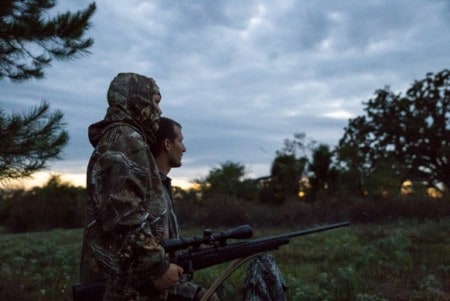 We have to remember to have fun. In doing that, we recruit new hunters and the next generation of land managers. It’s incredibly important to teach them the correct way from the beginning so we can minimize their learning curve. With that being said, we also have to be willing to relax the grip on our management techniques at times to allow these young hunters to participate. It won’t kill our management plan to allow your child/grandchild to take a young doe or buck. It gets them involved at an early age and provides an incredible teaching tool to understanding and respecting this magnificent animal we have the opportunity to enjoy.
We have to remember to have fun. In doing that, we recruit new hunters and the next generation of land managers. It’s incredibly important to teach them the correct way from the beginning so we can minimize their learning curve. With that being said, we also have to be willing to relax the grip on our management techniques at times to allow these young hunters to participate. It won’t kill our management plan to allow your child/grandchild to take a young doe or buck. It gets them involved at an early age and provides an incredible teaching tool to understanding and respecting this magnificent animal we have the opportunity to enjoy.
To learn more, be sure to read Stephen’s first article of the series: Intensive Deer Management on Your Ranch
About the Author
Stephen Schwartz is a Texas licensed farm and ranch real estate agent with Hortenstine Ranch Company and a graduate of Texas A&M with a BS in Agricultural Engineering. Mr. Schwartz has also earned a Level 2 Deer Steward QDMA from Clemson University. Stephen is also a gifted photographer and captured the beautiful images in this article. Learn more about Stephen Schwartz and Texas ranches for sale at https://hrcranch.com/
Original Article: https://hrcranch.com/managing-the-deer-herd-on-ranch/

